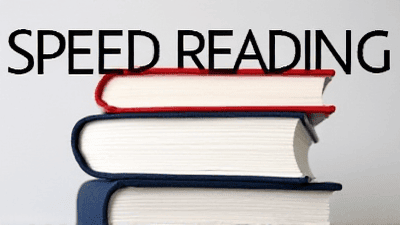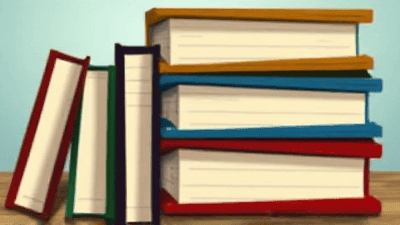
Unlock Rapid Reading: Devour Novels in Hours, Not Days, with Proven Techniques
Speed reading is often perceived as a mere trick, yet it represents a fundamental shift in how we process written information. At its core, it's about optimizing the brain's natural ability to recognize patterns and extrapolate meaning from text at an accelerated rate, moving beyond traditional, slower reading habits. In an era of unprecedented information overload, mastering this skill is not just a luxury, but a critical advantage for personal and professional growth.
The ability to process vast quantities of text efficiently holds immense value for students, professionals, and avid readers alike. It enables deeper engagement with subject matter, faster acquisition of new skills, and significantly enhances leisure reading experiences. Current discussions in educational psychology and cognitive science highlight speed reading as a crucial component in battling information fatigue, while debates continue regarding the optimal balance between pace and retention. Techniques are evolving, integrating insights from eye-tracking research and cognitive training. What impact would it have on our understanding or practice of knowledge acquisition if we failed to fully comprehend and implement effective strategies for rapid, yet meaningful, reading?
Unveiling Slow Reading Habits

Understanding the Habits Slowing You Down
Traditional reading methods, often ingrained since childhood, are typically characterized by several unconscious habits that significantly impede speed. One primary culprit is subvocalization (the silent sounding out of words in your head). While helpful for beginners to associate written words with their spoken forms, it limits reading speed to speaking speed, which is typically around 150-250 words per minute (WPM). Imagine trying to "read" a page by verbally articulating every word; subvocalization creates a similar, albeit internal, bottleneck. Another major barrier is fixation (the brief pause your eyes make on individual words or small groups of words). Our eyes don't smoothly glide across a line of text; instead, they jump from point to point, capturing information during these static moments. Excessive fixations, especially on single words, fragment the reading process. Furthermore, regression (the habit of re-reading words or sentences) arises from a lack of confidence, distraction, or poor comprehension, further compounding delays. Research by vision scientists indicates that conscious effort can significantly reduce these inefficient eye movements.
Mastering Visual Pacing and Cognitive Efficiency
Core Techniques for Accelerated Reading and Enhanced Focus
To truly accelerate reading, one must actively break free from the limiting habits of subvocalization, excessive fixation, and regression by adopting deliberate strategies. Visual pacing is a cornerstone technique, involving the use of a finger, pen, or cursor to guide your eyes across and down the page. This external guide creates a rhythm, helps maintain focus, reduces regressions by physically drawing your eyes forward, and expands your visual span by encouraging your eyes to move in consistent, broader sweeps rather than individual word jumps. Another critical technique is chunking, where the reader learns to perceive groups of words—phrases or short sentences—as single units rather than individual words. This leverages peripheral vision and reduces the number of fixations per line, allowing for a more efficient intake of information. For instance, instead of reading "the | quick | brown | fox", one would aim to see "the quick brown | fox jumped over".
The table below illustrates the potential impact of applying these techniques, demonstrating how increasing word chunk size and reducing fixations directly correlate with higher reading speeds, assuming consistent comprehension levels are maintained.
| Reading Style | Fixations per Line (approx.) | Words per Fixation (approx.) | Estimated WPM |
|---|---|---|---|
| Traditional Word-by-Word | 7-10 | 1-2 | 150-250 |
| Basic Speed Reading (Chunking) | 4-6 | 3-4 | 300-500 |
| Advanced Speed Reading (Broad Chunks) | 2-3 | 5-7 | 600-1000+ |
This data shows a clear progression: as readers train their eyes to absorb more words per fixation and reduce the total number of stops on a line, their reading speed dramatically increases. By consciously expanding their foveal vision (the central part of our retina responsible for sharp central vision) and leveraging peripheral vision more effectively, readers can train their brains to process information in larger, more meaningful segments. This cognitive shift, when practiced diligently, transforms reading from a linear, word-by-word decoding process into a more holistic, pattern-recognition endeavor, similar to how an experienced musician reads sheet music by recognizing chords rather than individual notes. This systematic approach enhances both speed and mental agility.
Beyond Speed: Actively Engaging with Text

Enhancing Comprehension and Retention in Rapid Reading
Achieving high reading speeds without sacrificing comprehension is paramount. This requires active engagement with the text, transforming a passive intake of words into an interactive mental process. A key technique is previewing (also known as surveying or skimming), where before diving into the main content, you quickly scan the article's title, headings, subheadings, introduction, conclusion, and any bolded text or images. This builds a mental framework or "schema" into which new information can be easily integrated. Think of it as looking at a map before embarking on a journey; it provides context and direction. Another crucial strategy is questioning. As you read, actively formulate questions based on the previewed material and seek their answers in the text. This fosters an inquisitive mindset, compelling your brain to search for specific information and recognize key details, thereby improving focus and recall. For instance, if a chapter title is "The Rise of Artificial Intelligence," you might ask, "What were the key milestones?" or "Who were the central figures?" Finally, summarization involves mentally or physically articulating the main points of each section or chapter immediately after reading it. This consolidates information, reinforces understanding, and helps in identifying gaps in comprehension. This three-pronged approach ensures that faster reading is accompanied by deeper, more meaningful learning and retention.
Conclusion
Mastering the art of speed reading transcends merely moving eyes faster; it is a profound cognitive realignment that redefines our interaction with written material. We have explored how overcoming deeply ingrained habits like subvocalization, excessive fixations, and regressions through techniques such as visual pacing and chunking can dramatically increase reading velocity. Crucially, this acceleration is not at the expense of understanding, but rather enhanced by active engagement strategies like previewing, questioning, and summarization. The core finding is that effective speed reading harmonizes both pace and comprehension, allowing readers to process information more efficiently and derive deeper meaning from texts. This skill stands as a formidable tool in navigating the information age, enriching both intellectual pursuits and personal enjoyment.
Looking ahead, the landscape of rapid reading is poised for further evolution, driven by technological advancements and deeper insights into cognitive neuroscience. Future breakthroughs might involve personalized adaptive reading software that tailors pacing and training modules to individual cognitive profiles, or even neurofeedback systems designed to optimize brain states for enhanced focus and retention. Challenges certainly remain, particularly in the effective application of these techniques across diverse text types—from complex scientific papers to lyrical poetry. However, the macro-scientific policies advocating for digital literacy and lifelong learning underscore the growing importance of such skills. Interdisciplinary integration, perhaps combining linguistics with artificial intelligence, could unlock new paradigms for human-computer interaction in reading. The prospect of continuously refining our ability to learn and comprehend at ever-increasing speeds emphasizes the enduring value of sustained research and practice in this dynamic field.
Frequently Asked Questions (FAQ)

Q: Does speed reading necessarily reduce comprehension, or is that a common misconception? A: This is perhaps the most common misconception surrounding speed reading, and the answer is a resounding "no" when the techniques are applied correctly. The belief that speed must be sacrificed for comprehension often stems from comparing traditional, inefficient reading methods with poorly executed attempts at speed reading. When you subvocalize every word, your comprehension is tied to your speaking speed. If you try to simply move your eyes faster without addressing this and other fundamental habits, you will lose comprehension. However, effective speed reading strategies aim to improve both speed and comprehension by optimizing how your brain processes information. By reducing subvocalization, expanding your visual span to take in chunks of words, and actively engaging with the text through techniques like previewing and questioning, you are not just scanning; you are training your brain to recognize patterns and extract meaning more efficiently. Think of it like a skilled musician learning to read a musical score: initially, they might read note by note, but with practice, they see chords and entire phrases, understanding the musical context more broadly and rapidly without losing any detail. Similarly, a proficient speed reader doesn't skip words; they process them in more meaningful groups, leveraging their cognitive abilities to build context faster, often leading to better comprehension than a distracted, slow reader. The key is proper training and consistent practice to retrain your reading habits.
Q: Can speed reading be effectively applied to all types of texts, including complex academic papers, legal documents, or highly technical manuals? A: While the core principles of speed reading—reducing inefficient eye movements, expanding visual intake, and active engagement—are universally beneficial, their application and expected outcomes vary significantly depending on the text's complexity and purpose. For narrative fiction or general non-fiction, speed reading can dramatically increase reading speed without compromising enjoyment or understanding. However, for highly technical, academic, or legal documents, where every word, nuance, and detail might be critical for precise understanding or future recall, the goal shifts from sheer speed to strategic reading. In these contexts, speed reading techniques might be used to initially skim the document quickly to grasp its overall structure, main arguments, and key conclusions (the "previewing" stage). This allows you to identify which sections require deep, meticulous analysis and which can be processed more rapidly. When encountering dense paragraphs or complex equations, you would naturally slow down, perhaps even revert to traditional reading to ensure full comprehension and retention of critical data. The idea is not to speed read everything at 1000 WPM, but to develop the flexibility to adjust your reading speed and technique based on the material's density, your purpose for reading, and the required level of detail. It's about being an agile reader, not just a fast one, knowing when to accelerate and when to dive deep.








